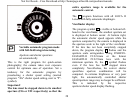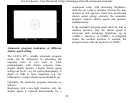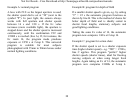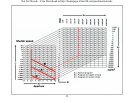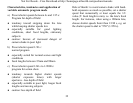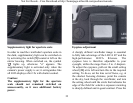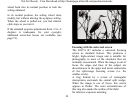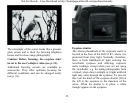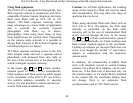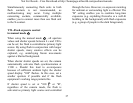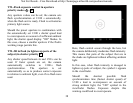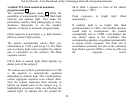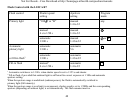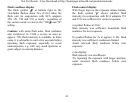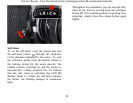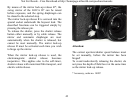
Not For Resale
–
Free Download at
http://homepage.ntl
world.com/joechan/
manuals
36
Using flash equipment
The LEICA R7 is designed for through-the- lens
flash-exposure control in conjunction with SCA-
compatible (System Camera Adaption) electronic
flash units fitted with an SCA 351 or 551
adapter. TTL-flash exposure metering offers
many advantages in various fields of application
and is essential for correctly exposed
photographs with flash, e.g. in macro-
photography, when using zoom lenses or long
focal length lenses for portrait shots. Depending
on the camera mode selected, it is possible to
dosage flash intensity as fill-in flash to lighten up
individual subjects (see below).
TTL-flash exposure metering occurs in the full-
field integral mode and uses a separate silicon
photodiode, well protected from stray light, in
the base of the camera next to the photocell for
selective/integral exposure metering.
In the modes
A , A and P , a flash synchro-
nization speed of 1/100 s is set automatically.
Flash readiness and flash control symbols appear
in the viewfinder of the LEICA R7 (see below).
Via suitable adapters (available in specialty
stores), it is also possible to control and activate
several flash units simultaneously.
Caution:
for all flash applications, the working
range of the respective flash unit must be taken
into consideration. This may affect the range of
apertures that can be set.
When using electronic flash units fitted with an
SCA 350 or SCA 550 adapter, the flash light
intensity is controlled via the flash unit's
metering cell (in the case of computerized flash
units), and not through the lens. In the modes
A , A and P , a flash synchronization speed of
1/100 s is automatically set. Flash readiness and
flash control symbols appear in the viewfinder.
Lighting up subjects per dosaged flash does not
occur, even though the symbol "" (see below)
appears in conjunction with the respective
camera mode.
In addition, all commercially available flash
units with standard coaxial or central hotshoe
contacts, but without SCA adapters, can be used.
However, if the flash unit is activated only via
the central contact, or if a studio flash is attached
to the contact
[3]
, the viewfinder display does
not change, there is no automatic flash
synchronization and no TTL-flash control.



